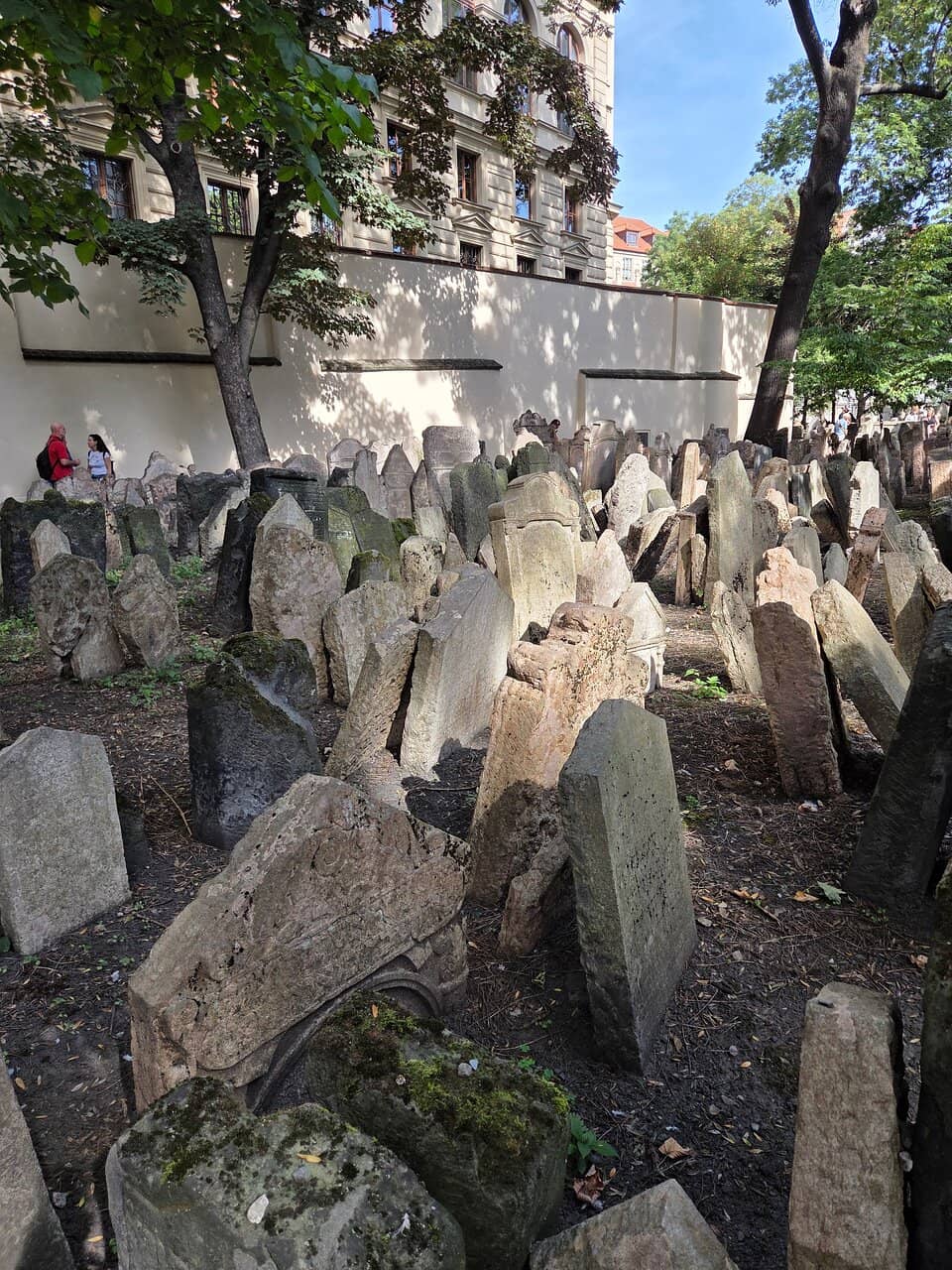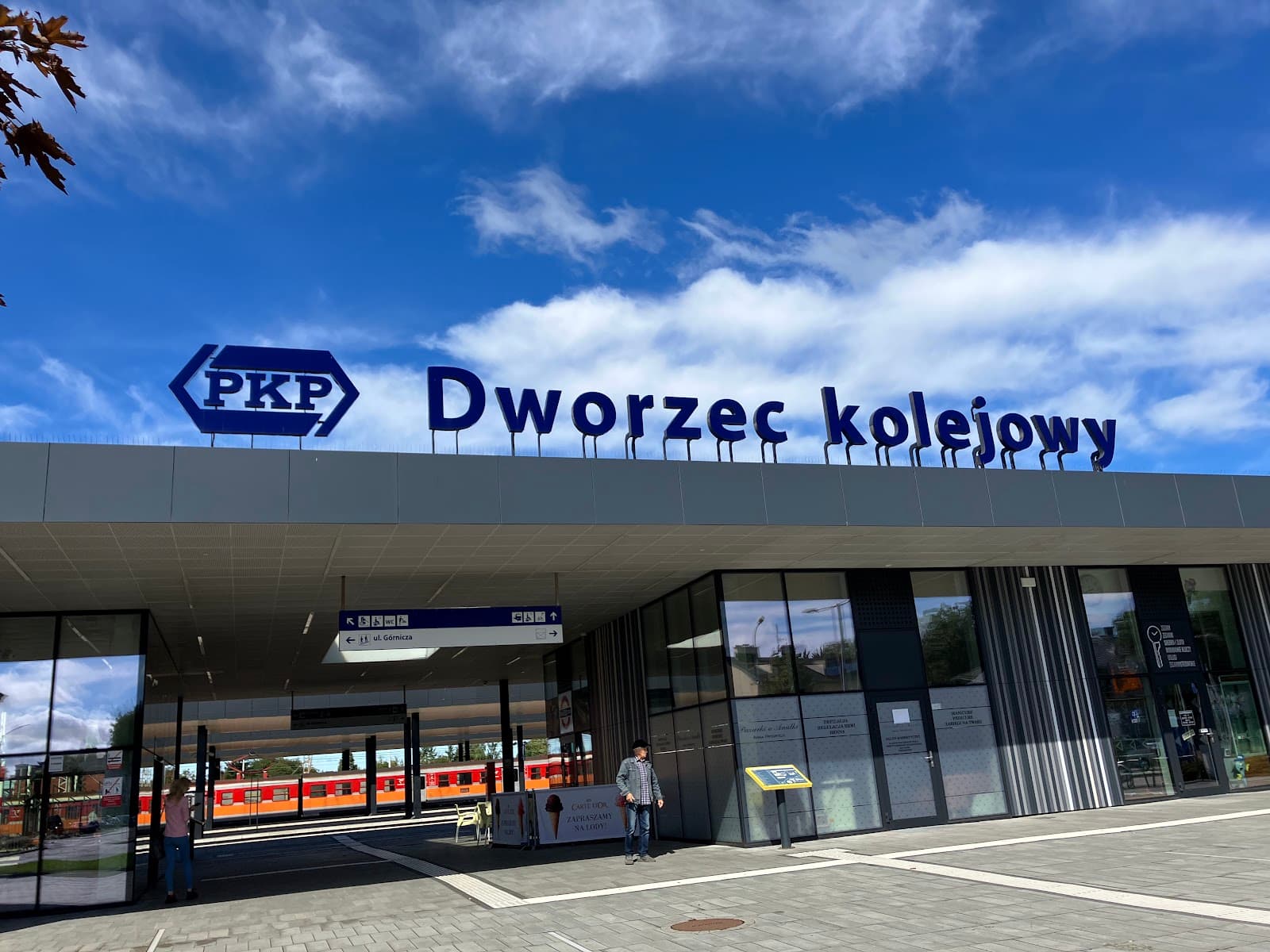
Oświęcim Jewish Cemetery
A sacred and solemn site preserving the memory of Oświęcim's pre-war Jewish community, marked by history and resilience.

Highlights
Must-see attractions

Social
From TikTok & Reddit
Best Time
Fewer crowds, more peaceful

Oświęcim Jewish Cemetery
Best Time
Fewer crowds, more peaceful

Highlights
Must-see attractions
A sacred and solemn site preserving the memory of Oświęcim's pre-war Jewish community, marked by history and resilience.
"A truly haunting place, with a dark background. This place is certainly worth a visit."

Book Tours in Advance
English guides can fill up quickly. Arrange tours with the Jewish Community Center for a deeper understanding .
Respectful Attire
Dress modestly out of respect for this solemn historical site. Avoid revealing clothing.

Highlights
Discover the most iconic attractions and experiences

Lapidarium Pyramids
Central part of the cemetery
Unique step pyramid structures built from fragments of destroyed tombstones, a poignant memorial.

Ohel of Szymon Kluger
Left side of the gate
The resting place of the last Jewish resident of Oświęcim, a modern memorial.

Preserved Tombstones
Throughout the cemetery
Over 1,000 matzevot, some dating back to the 18th century, with intricate carvings and inscriptions.
Plans like a pro.
Thinks like you
Planning Your Visit
Respectful Visitation
Arranging Your Visit
Best Times
Insider Tips
from TikTok, Instagram & Reddit
Book Tours in Advance
English guides can fill up quickly. Arrange tours with the Jewish Community Center for a deeper understanding.
Respectful Attire
Dress modestly out of respect for this solemn historical site. Avoid revealing clothing.
Photography Etiquette
Capture the history, but be mindful of the atmosphere. Avoid intrusive or disrespectful photos.
Combine with Auschwitz
Visiting both sites offers a profound historical perspective. Many tours include both.
Tips
from all over the internet
Book Tours in Advance
English guides can fill up quickly. Arrange tours with the Jewish Community Center for a deeper understanding.
Respectful Attire
Dress modestly out of respect for this solemn historical site. Avoid revealing clothing.
Photography Etiquette
Capture the history, but be mindful of the atmosphere. Avoid intrusive or disrespectful photos.
Combine with Auschwitz
Visiting both sites offers a profound historical perspective. Many tours include both.
Key Collection Point
You may need to collect keys from the Jewish Community Center in Oświęcim to access the cemetery.
What Travellers Say
Reviews Summary
Visitors describe the Oświęcim Jewish Cemetery as a haunting and profoundly moving site, especially when visited in conjunction with Auschwitz. While access can sometimes be challenging, the historical significance and the preserved tombstones offer a powerful glimpse into the pre-war Jewish community and the impact of the Holocaust.
"A truly haunting place, with a dark background. This place is certainly worth a visit, especially if you are also visiting Auschwitz."
Jacob Swetmore
"It is usually closed, but yesterday it was open to commemorate the liberation of the camp."
Wojciech 74-400
"The cemetery was most likely established in the mid-18th century, at the corner of today's streets. Dąbrowskiego and Wysokie Brzegi. During World War II, in 1941, the cemetery was closed and then devastated by the Germans. Part of the area was used to widen the street. Dąbrowski. Currently, the cemetery is fenced with a brick wall with a closed gate. Approximately 1,000 tombstones have been preserved on an area of 1.7 hectares, only some of which are in their original location. The monuments made of granite and sandstone date back to the 19th and early 20th centuries. The decorations carved on them and inscriptions in Hebrew, Polish and German have been preserved. Some of the most damaged matzevot were collected and placed on a common plinth, which serves as a monument-lapidarium. On the left side of the gate there is a modern ohel, where Szymon Kluger (died May 16, 2000), the last Jewish resident of Oświęcim, was buried.
In the central part of the cemetery, there are two lapidaries, resembling step pyramids. Fragments of destroyed tombstones were used to build them. In the lapidarium built on the axis of the gate, you can find the oldest identified tombstone, commemorating Abraham Aba, son of Asher Zelig (died on October 21, 1757). Behind the lapidarium there is an ohel, built in the 1980s by Ascher J. Scharf. Formally, the cemetery is the property of the Jewish Community in Bielsko-Biała. Those interested in visiting the cemetery must unfortunately go to the Jewish Center in Oświęcim at pl. to collect the keys. priest Jana Skarbka 5. This place is approximately 1.2 km from the cemetery."
Maciej Borski
What People Like
What People Dislike
Frequently Asked Questions
🚇 🗺️ Getting There
You can take a bus or train from Krakow to Oświęcim. From the Oświęcim train station or bus stop, it's a walk of about 20-30 minutes to the cemetery. Taxis are also available. Some visitors opt for guided tours from Krakow that include transportation.
The cemetery is located at the corner of Dąbrowskiego and Wysokie Brzegi streets. While it's a significant historical site, it's advisable to use a map or GPS, especially if you're walking from the town center.
Limited parking may be available nearby, but it's best to check local conditions upon arrival. Walking or using public transport is often more convenient for visitors exploring the town.
Local buses may serve the area, but given the cemetery's location and the town's size, walking is a common and feasible option for many visitors after arriving by train or bus from Krakow.
Many visitors take an early train or bus from Krakow to Oświęcim. This allows ample time to visit both the Jewish Cemetery and Auschwitz-Birkenau Memorial and Museum before returning to Krakow in the evening.
🎫 🎫 Tickets & Entry
Entry to the cemetery itself may not require a ticket, but access often necessitates collecting keys from the Jewish Community Center in Oświęcim. It's crucial to confirm this arrangement beforehand.
The cemetery's opening hours can be limited and may vary. It's essential to contact the Jewish Community Center in Oświęcim or the Jewish Community in Bielsko-Biała to confirm access and hours before your visit.
Visits are often by prior arrangement. Contact the Jewish Community Center in Oświęcim or the Jewish Community in Bielsko-Biała to schedule a tour or to get information on how to gain access.
While the cemetery has historical significance, it's not always open to the public. It may be open on specific dates, such as for commemorations, or by appointment only.
While there might not be a direct entrance fee, there could be costs associated with guided tours or if special arrangements are needed for access. Inquire with the managing Jewish communities for details.
🎫 🧭 Onsite Experience
You'll find approximately 1,000 tombstones, some dating back to the 18th century, including unique lapidarium pyramids made from tombstone fragments. You'll also see the Ohel of Szymon Kluger, the last Jewish resident.
The cemetery covers an area of 1.7 hectares and contains around 1,000 preserved tombstones, some of which are not in their original locations. It's a significant historical site to explore.
Yes, photography is generally permitted. However, visitors are reminded to be respectful of the solemn nature of the site and avoid intrusive photography.
Established in the mid-18th century, it was devastated by the Nazis during WWII. It stands as a testament to the pre-war Jewish community of Oświęcim and the impact of the Holocaust.
While tours can be arranged through the Jewish Community Center, onsite guided tours might be limited. It's best to confirm tour availability and options when you make your booking.
📸 📸 Photography
The lapidarium pyramids offer unique photographic opportunities. The preserved tombstones with their inscriptions and carvings, as well as the Ohel of Szymon Kluger, are also compelling subjects.
Photography is generally allowed, but always be mindful of the sacred nature of the site. Avoid taking photos of individuals without permission and maintain a respectful distance.
A standard camera or smartphone is sufficient. Consider a lens that can capture both wide shots of the cemetery grounds and detailed close-ups of the tombstone inscriptions and carvings.
Drone photography is likely prohibited due to the sensitive nature of the site and its proximity to other historical locations. Always check local regulations before flying drones.
Early morning or late afternoon light can create dramatic shadows and highlight the textures of the tombstones. Overcast days can also provide soft, even lighting for detailed shots.
For Different Travelers
Tailored advice for your travel style
👨👩👧 Families with Kids
For families, it's crucial to prepare children for the solemnity of the site. Explaining that it's a place where people are remembered can help. The lapidarium structures, made from tombstone fragments, might be visually interesting for older children, offering a tangible connection to the past. However, prioritize respectful behavior and a quiet demeanor throughout the visit.
🤔 History Enthusiasts
Engaging with a guided tour is highly recommended for a comprehensive understanding. These tours often delve into the history of the cemetery's establishment, its desecration during WWII, and the ongoing efforts to preserve its heritage. Visiting the Ohel of Szymon Kluger, the last Jewish resident, provides a poignant connection to the continuity and eventual end of Jewish life in Oświęcim.
Deep Dives
In-depth insights and expert knowledge
History and Devastation
Despite the immense damage, approximately 1,000 tombstones, known as matzevot, have survived. These monuments, crafted from granite and sandstone, bear inscriptions in Hebrew, Polish, and German, offering glimpses into the lives of those buried there. Many of these stones are no longer in their original positions. To preserve what remains, damaged matzevot have been collected and placed on a common plinth, forming a poignant lapidarium- a monument to the lost.
The cemetery has undergone several phases of renovation and preservation efforts since the war. These initiatives, often supported by foundations and community organizations, aim to protect this significant historical site. The 'Bunker of Memory' project, for instance, has focused on carefully placing preserved tombstone fragments, ensuring their continued visibility and remembrance. The cemetery is a powerful reminder of the pre-war Jewish community and the profound impact of the Holocaust.
Visiting and Access
While the cemetery may be open to the public on certain days, particularly for commemorations, it's highly recommended to confirm visiting hours and access procedures in advance. Social media content highlights that tours are available and can provide invaluable context to the site's history and significance. These tours can offer a deeper understanding of the tombstones, the lapidarium, and the overall story of the Jewish community in Oświęcim.
When visiting, remember that this is a sacred and solemn place. Visitors are encouraged to dress modestly and behave with respect. Photography is generally permitted, but it's important to do so mindfully, capturing the history without being intrusive. The experience of visiting the cemetery, especially when combined with a visit to Auschwitz-Birkenau, offers a profound and moving historical perspective.






Social
from TikTok, Instagram & Reddit